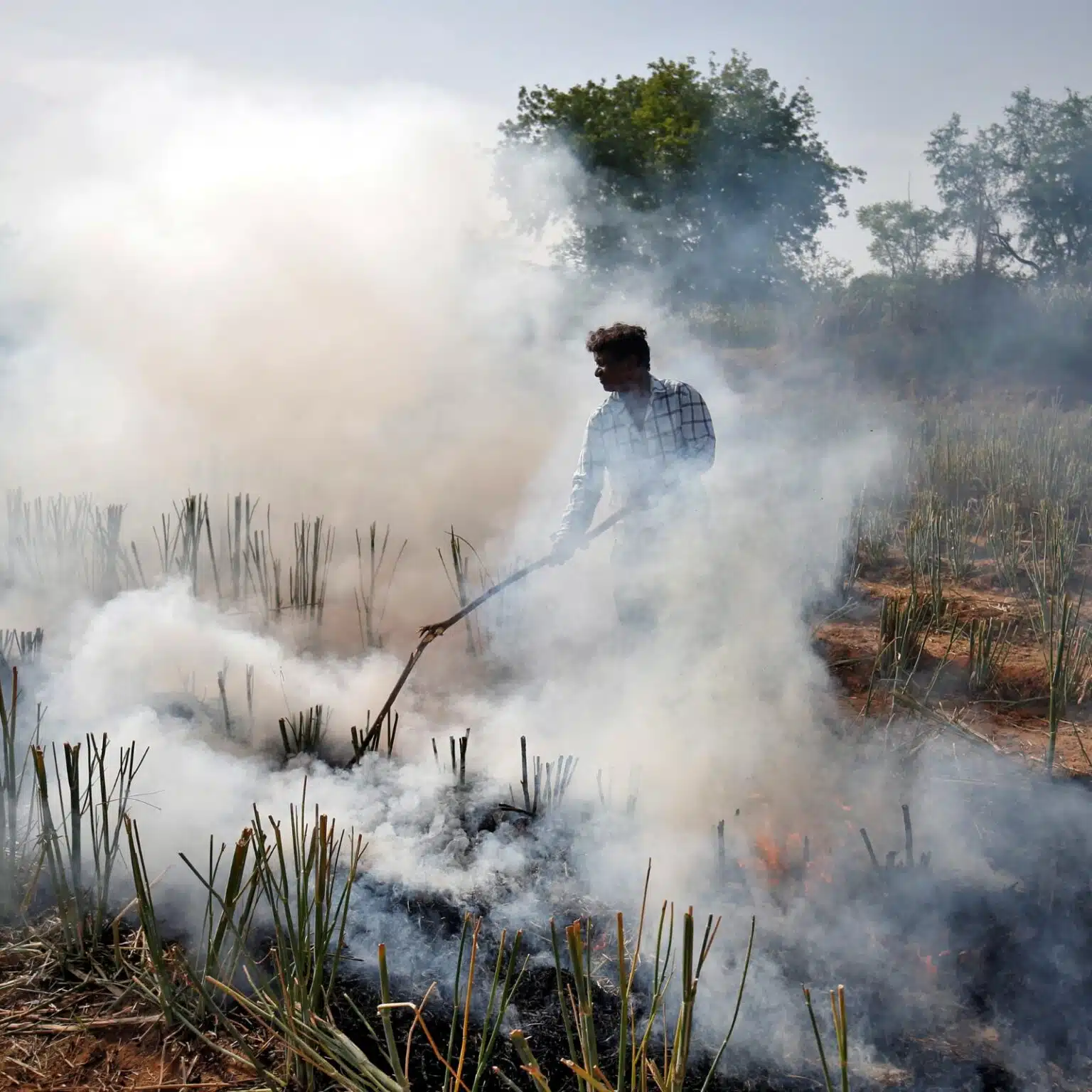A total of 147 agricultural fires were reported between September 15 and 30, after which there were no fires reported for over a week because of heavy rainfall in the northern plains. Beginning on October 4, a similar time is anticipated in Punjab.

According to data compiled from satellite pictures, farmers have begun burning agricultural stubble over the northern plains, with Sunday registering this year’s highest single-day fire count of 130. On October 2 (Sunday), 83 fires were reported in Punjab, the same as seen in the previous years; seven were reported in Haryana, and 36 in Uttar Pradesh.
Between September 15 and September 30, 147 farm fires were reported in Punjab, according to the data collected by the Consortium for Research on Agroecosystem Monitoring and Modelling from Space (CREAMS), a division of the Indian Agricultural Research Institute (IARI).
In contrast to that, the state only reported 128 total fires on the first and second days of October, showing that the yearly effort to clear the fields of crop stubble has accelerated. This is not good news for Delhi, which experiences dangerously high levels of air pollution brought on by the wind that pushes smoke and pollutants in its direction every year.
The stubble burning season also falls with unfavorable weather patterns in Delhi-NCR (National Capital Region), which keep the pollutants confined close to the surface, further making the situation worse.
The stubble fires in Punjab also falls with unfavorable weather patterns in Delhi-NCR: ISRO Collecting Data
The Indian Space Research Organisation (ISRO), which is currently collecting data from all the NCR states, developed a standard protocol for monitoring data on farm fires. This year, each state is following the ISRO protocol, which will help provide uniform data from each state to the Commission for Air Quality Management (CAQM), the organization is charged with managing pollution in Delhi-NCR.
Previously, states had their own unique counts of farm fires since they relied on various NASA satellites, which made them all inconsistent. According to CREAMS statistics, Punjab experienced 275 farm fires between September 15 and October 2, which is somewhat more than the state’s 228 fires during the same time the previous year. However, it is less than the 1,331 fires Punjab reported over the same time period in 2020.
Initial trends indicate a similar fire count to last year, and it appears to be a significant improvement over 2020, according to VK Sehgal, professor and lead scientist at IARI and a member of CREAMS.
He added that both this year and the previous year, the late monsoon rains were crucial. From September 24 to September 29, no fire counts were recorded. The main cause of this was rain in Punjab, where the fields stayed soggy for a few days so that the paddy stubble could not be burned.
Sehgal predicted that a rainy period, which is expected to last from October 5 to 9, will bring another respite from farm fires in northern India. “We might once more see a spike in the activity starting around October 10 or a bit later,” he said.
Amritsar and Tarn Taran, which together account for 230 of the 275 fires that have been reported so far in Punjab, have emerged as the most problematic areas. According to Sehgal, this may be mostly due to the fact that these regions also grow potatoes. By mid-to late-September, they start burning paddy fields so that they may sow potatoes by early October, the man claimed.
Haryana is doing better than last year, even though Punjab currently has had more fires than this time last year. Between September 15 and October 2, just nine fires have been reported in Haryana, compared to 13 over the same period in 2021 and 123 in 2020.
49 fires have been reported in Uttar Pradesh thus far, compared to 46 during the same period in 2019 and 63 in 2020. According to the data, Rajasthan has reported five fire incidents up till October 2nd while Delhi has yet to record a single fire incident.

A clearer trend won’t become apparent until the end of October, according to Pawan Gupta, a Universities Space Research Association (USRA) scientist at NASA’s Marshall Space Flight Center who conducted a study using the VIIRS SNP 375m satellite.
Even if the number of fires is increasing and the winds are out of the northwest, experts believe it has not yet had an influence on Delhi’s air quality.
“There aren’t many fires currently, and the wind isn’t blowing very hard either. According to Gufran Beig, founder and project director of Safar, a government organization that monitors the contribution of stubble burning to Delhi’s overall PM2.5 (fine inhalable particulate matter in the air) concentration, the fires are not expected to begin affecting Delhi until after October 10.
According to Krunesh Garg, member secretary of the Punjab Pollution Control Board, local efforts are beginning to show some progress, but it will still be four or five years before the issue is fully resolved.












